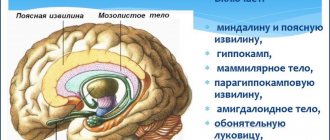Learned helplessness causes a person to remain inactive. How often do you consider yourself ineffective, unable to solve even a simple problem? Do you justify your failures by heredity or circumstances? If so, then you have learned helplessness. This is a condition that prevents you from seeing the world in bright colors. This is constant pessimism, despondency, depression. Is it possible to change the situation?
Learned helplessness syndrome: what is it?
Learned helplessness syndrome is a psychological state of a person that occurs when an individual, having a real opportunity to improve his condition (remove negative aspects from life or attract positive aspects), does not want to make any attempts in this regard. The person no longer feels a real connection between his own efforts and the results he could get.
Some experts argue that learned helplessness is not a syndrome, but a permanent or situational (temporary) character trait that an individual can acquire after one or more unsuccessful attempts to change the current life situation for the better. After another failed attempt, a person at some point begins to sincerely believe that in any case he will not be able to change anything, so he can only passively go with the flow and observe the events taking place in his life only from the outside.
Having fallen under the influence of the syndrome, a person begins to think that he has no ability to control the current situation and at least somehow influence his own life, so he no longer takes any active steps to eliminate this or that issue that negatively affects his daily existence and makes you experience negative emotions.
People with learned helplessness syndrome can be found almost everywhere. Children, teenagers, young people, middle-aged people and old people can become victims of this mental state.
Seligman's model of optimism
Seligman, one of the researchers who helped discover the phenomenon of learned helplessness, later found his attention drawn to what may be the exact opposite of learned helplessness: optimism .
Although Seligman's name had been synonymous with learned helplessness for many years, he knew he had much more to offer the world. His work on this topic led him to think about what other perspectives could be learned and whether people could develop positive traits rather than developing feelings of helplessness.
Seligman's research led him to create a model of learned optimism. He found that through resilience training, people can learn to develop a more optimistic outlook. This ability has been observed in children, teachers, military personnel and many others.
It may not be as easy to learn optimism as it is to learn helplessness, but it can be done . If you want to learn more about optimism and how you can learn it, check out Seligman's book, Learned Optimism: How to Transform Your Mind and Your Life . In addition to a brief overview of the research on the subject, you'll also read about several simple techniques you can use to develop a more positive and compassionate explanatory style .
How, when and by whom learned helplessness syndrome was discovered: a little history
Martin Seligman - American psychologist
Learned helplessness syndrome was discovered in 1967 by the American psychologist and creator of positive psychology Martin Seligman. It all started in 1964, when the scientist took an active part in a series of experiments on dogs that were carried out in psychological laboratories at the University of Pennsylvania.
Experiments on dogs were conducted to complement Pavlov's earlier research on conditioned reflexes. The essence of Seligman's experiments was to artificially develop in dogs a persistent fear of the ringing of a bell.
The experimental dogs were locked in cages and, as soon as the bell rang, they were immediately shocked. The psychologist suggested that dogs, as soon as such an opportunity presented itself, upon hearing the sound of a bell, would immediately run away. But the scientist’s assumption was not confirmed in practice: the dogs, already in open cages, heard the ringing, did not run away, but lay down on the floor, whined and obediently waited for the next electric discharge.
In 1967, Martin Seligman, with the support of his colleague Stephen Mayer, decided to conduct another experiment with dogs. This time, scientists divided all the experimental dogs into two groups. The first group of dogs, as in 1964, were locked in cages and shocked. The same cages in which the second group of dogs were placed were equipped with a special button. By pressing this button with their nose or paw, the dogs from the second group could not only get out of the cages themselves, but also save the dogs from the first group.
After some time, all experimental dogs were placed in electrified enclosures. Any dog could, having first overcome a small barrier, leave the uncomfortable enclosure without much difficulty. The dogs from the second group were able to quickly understand the situation and leave the enclosure. The dogs from the first group, who had previously had to exist in conditions of total hopelessness, remained in the enclosure and continued to endure pain.
Having assessed the results of the experiment, scientists came to the conclusion that unpleasant events are not the cause of learned helplessness syndrome. This mental state arises due to a previous experience that convinces a living being that it does not have the ability to control these unpleasant events. If a living being gets used to the fact that nothing in his life depends on his own active actions, he begins to believe that troubles arise on their own, so he has no way to influence them.
Seligman's theory became so widely known that it was published by several reputable psychological publications. In 1976, the scientist received the prestigious American Psychological Association Award for his discovery of learned helplessness syndrome.
Causes of learned helplessness syndrome
Learned helplessness syndrome is an acquired, not an innate, mental condition. Therefore, it is not surprising that it is formed at one time or another in life under the influence of certain reasons.
There are many causes of acquired helplessness syndrome. Let's look at the most common ones!
✔ Education
Education is the first and main cause of this syndrome. Very often, parents, educators and teachers, without realizing it, push the child to fall under the influence of learned helplessness syndrome.
If a child does not understand exactly how and what exactly his actions influence, then he will never be able to establish an obvious connection between his own actions and the consequences that arise. A state of learned helplessness also appears in a child when his actions (both positive and negative) do not cause any consequences or completely different actions cause the same consequences. If parents reward their son or daughter equally for an excellent grade in a difficult subject and for a washed cup, then the child will not be able to understand the reason for the events happening around him.
First, the child asks himself the question of whether his actions can somehow influence the current situation, and then he ceases to see the connection between his actions (efforts) and the result obtained.
✔ Mentality
Mentality is another reason for this insidious syndrome. In those countries where citizens are limited in their own actions and cannot protect either their rights or the rights of their children, many people fall under the influence of acquired helplessness syndrome. They sincerely believe that there is no point in going to court, because there is no doubt that they will definitely not win the case.
The acquired state of helplessness affects many areas of life. Gradually, people stop believing in their own strengths and begin to think that inaction is the only normal way out of this or that current life situation.
✔ Constant failures
Constant failure is the third reason for the emergence and development of learned helplessness syndrome. If a person constantly tries to achieve the necessary results, but he never succeeds, then at some point he will definitely give up.
An individual broken by a series of failures does not believe that he can change anything in his life. Such a person loses the desire to achieve his goals, so he simply goes with the flow and tries to keep a low profile, so that fate, which losers often blame for all their troubles, does not once again put him in his place.
✔ Stereotypical way of thinking
Outdated, untrue and imposed by other people patterns and stereotypes not only prevent a person from achieving his goals, but also significantly worsen his quality of life. If an individual does not do something because “this is not customary among decent people,” then he gradually becomes a victim of the learned helplessness syndrome.
People who still sincerely believe that a man should chase a mammoth, and a woman should sit with the children and make sure that the fire does not go out, are unlikely to be able to achieve any real results.
Related tests and questions
Although many people have included measures of learned helplessness in their curriculum, they are often informal. However, there are two measures that have been used quite often recently.
The Learned Helplessness Scale was developed by Quinless and Nelson (1988) to collect and score learned helplessness. The scale consists of 20 items rated on a scale from 1 (strongly agree) to 4 (strongly disagree). The minimum score for this measure is 20 and the maximum is 80, with higher scores indicating greater degrees of learned helplessness.
The Learned Helplessness Questionnaire was created in 2014 by Sorrenti and colleagues in a study on learned helplessness and mastery orientation. Learned Helplessness consists of 13 items rated on a scale from 1 (not true) to 5 (very true), for a total possible score of 13 to 65. An example of this scale is the statement “When you encounter an obstacle in your learning activities, you stop trying. You get frustrated easily.
Important! If you are more interested in a scale that measures learned optimism, you can find the Test of Learned Optimism, a scale adapted from Seligman's book. It includes 48 items with two possible answers.
How does a person feel who has become a victim of learned helplessness syndrome?
According to Seligman's findings, learned helplessness syndrome manifests itself as a perceived deficit in abilities in the emotional, cognitive and motivational areas of life.
Emotional deficit manifests itself in a person with learned helplessness syndrome in the form of a constant feeling of hopelessness, depressed and apathetic mood. Feelings of hopelessness and depression can trigger the onset of clinical depression in an individual.
☑ Cognitive deficit is a lack of flexibility. A person does not realize that any single mistake is not a catastrophe on a global scale, but just an ordinary life phenomenon.
☑ Motivational deficit is the lack of a skill that motivates an individual to take active action.
A person with acquired helplessness syndrome becomes lethargic, withdrawn, indifferent, passive and timid; she constantly experiences feelings of guilt and emotional instability. Such an individual has low self-esteem, lack of creativity and a low level of aspirations. Such a person, who over time becomes an eternal victim of the next life situation, looks at his life through the prism of pessimism.
The individual believes that for all the failures that happen in his life, he is always to blame. Nevertheless, successes are perceived by such a person as an accident that happened to him thanks to a happy coincidence of circumstances.
Psychologist Natalya Solntseva says that a person under the influence of learned helplessness syndrome often uses the following words and phrases in everyday life:
“I can’t”, “I don’t want”, “I don’t have any desire”, “it’s always been like this”, “this happens all the time”, “it doesn’t matter”, “all my relatives and friends are experiencing the same difficulties “,” “I can’t do this,” “all this is useless,” “others will succeed, but I definitely won’t,” “I will never be able to do this,” etc.
The concept of the syndrome
The phenomenon of learned helplessness has been known for a long time, but the technology for working with it has not been sufficiently described and developed.
Learned helplessness is always associated with difficulty:
- Goal setting (“I don’t want anything”, “I don’t know what to choose”).
- Maintaining the original intention (“I was no longer interested”, “I changed my mind about doing it”).
- Initiating action (“it’s hard for me to start”, “I’ll do it later”, “I would like to, but...”).
- Overcoming obstacles (“I didn’t think it would be so difficult”).
Vivid examples of the influence of learned helplessness syndrome from everyday life
How does learned helplessness affect people's daily lives? Let's look at this question using typical examples!
Example No. 1. Konstantin and his studies at school
Until the fifth grade, Kostya was an exemplary student and an obedient boy, whom teachers set as an example for other students. He loved to study, listened enthusiastically to the teacher and did all his homework with great pleasure.
In the fifth grade, the situation changed in the most dramatic way. Konstantin used to love mathematics, but now he has problems with geometry. He asked the teacher several times to repeat some key points that he did not understand the first time. The mathematician not only did not want to waste time repeating the material already told, but also told Kostya that geometry is a subject that only children with developed intelligence can understand.
Having heard this, the boy concluded that he was not smart enough for geometry, so there was no point in delving into this subject and trying to learn anything, because the teacher clearly explained to him that his mental abilities were not enough to get a good grade. Gradually, Kostya lost interest not only in geometry, but also in other subjects. He got involved with bad company and began to systematically skip classes.
Example No. 2. Tatyana and her married life
Since childhood, Tatiana dreamed of marrying a handsome prince. The girl’s mother constantly told her that she was ugly and stupid, so she should cherish, cherish and idolize the man who would pay even the slightest attention to her.
At nineteen, Tanya met Sergei, whom she married a year later. Two years after the wedding, she found out that her husband had a mistress. Tatyana talked to her husband and demanded that he stop cheating on her. The man promised to improve, but a couple of days later the deceived wife accidentally overheard his conversation with his mistress, to whom he confessed his love.
Tatyana realized that her husband continued to cheat on her, and all his words were a blatant and cynical lie. Instead of packing up her things and filing for divorce, the woman continues to live with the traitor, because she sincerely believes that no one else will want to start a family with her. The unfortunate woman not only lost the meaning of life, but also gained ten extra pounds, since she prefers not to solve her problem, but to “extinguish” it with high-calorie food.
Example No. 3. Denis and his new position
Denis searched for a suitable job for a long time. When luck finally smiled on him and the employer decided to sign a contract with the guy, Denis was in seventh heaven. He set several goals for himself and began to do everything possible to prove to his boss that he was worthy of holding the position given to him!
Unsuccessful negotiations with a client upset the man, but did not force him to abandon his goals. A conflict with a colleague and an unpleasant conversation with another client forced Denis to look at himself with completely different eyes. He began to doubt his abilities. No matter how hard the guy tried to correct the situation, nothing worked.
After another failure, Denis became so disappointed in himself and his abilities that he stopped paying due attention to fulfilling his job duties. The boss called him into his office and warned him that a person who holds such a responsible position is obliged to behave accordingly.
Denis realized that he would no longer be able to solve work issues. He asked his boss to transfer him to a less responsible position. The man spends his free time near the TV, holding another bottle of beer in his hands. Denis now doesn’t even remember the goals he once set, because he knows for sure that his life depends on anything, but not on himself.
Is it possible to fight learned helplessness syndrome?
It is not only possible, but also necessary to combat learned helplessness syndrome. There are many different ways by which you can get rid of this insidious syndrome. We bring to your attention the most popular and effective of them!
Method No. 1. Establishing a connection between our own actions and consequences
Whether you realize it or not, there is a real connection between what you do and what you end up getting. Therefore, always look for this connection, and do not blame yourself, bad weather, a rich neighbor or a black cat that crossed your path at the wrong time and in the wrong place for all your failures.
You should be motivated not only by negative, but also by positive events to search for connections between actions and deeds. You need to understand that your life at the current moment is the result of a series of certain actions you have performed.
Want to get a completely different result? Then start thinking and acting differently! But never be disappointed in yourself and don’t doubt your own capabilities! Keep taking active steps!
Method No. 2. Failures are an integral part of our life
Some people perceive the most insignificant failure as a tragedy on a global scale. To get rid of learned helplessness syndrome, you need to understand that failure, like success, is an integral part of our lives.
If another failure has occurred in your life, this indicates that you are actively taking action and trying to achieve your goals. Failures do not happen only to those people who do not strive for anything, stupidly go with the flow and do not engage in self-development.
Failure teaches you not to make the same mistakes you've already had to deal with. Therefore, learn to treat failures as invaluable experiences that make you a wiser and more understanding person.
Examples of learned helplessness
Example one : a student gives up studying mathematics because he was not good at something before. He does not raise his hand, is shy and avoids any activity related to this subject. The problem is aggravated by the fact that the child does not know how to reflect, that is, he does not understand that previous failures could be related to the teaching method, the teacher, or a specific topic. In the future, helplessness can spread to other objects.
Example two : a baby elephant is tied with a chain to a tree for some time. He tries to free himself several times, but to no avail. In the end, he submits to his fate and stops resisting. This early life experience leaves the elephant helpless for life.
Example three : an employee is trying to influence his colleagues and boss so that the company can work more efficiently. He makes suggestions, draws graphs for increasing productivity, and tries to explain to everyone why this would be better. However, the company is state-owned and its management is not at all interested in changing anything. As a result, a person becomes so disappointed in his attempts and in himself that he submits to fate and becomes part of the system.
Interestingly, acquired helplessness can affect an entire country. Election promises broken several times lead to general disappointment. Citizens stop trying to change something for the better, the opinion begins to triumph that nothing will change, as “they stole, so they will steal,” etc.











